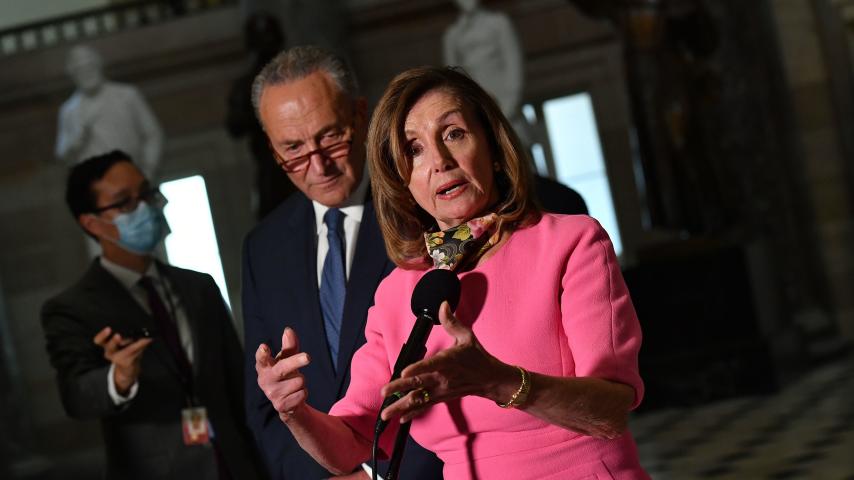
The newest projections from August 6, projects through December 1, 2020.. The other four projections are through November 1, 2020, Georgia now has the highest projected death rate 2829 per million. This week projections rose by major proportions for Colorado, California, Arkansas, Oklahoma, Wisconsin,Washington State, Virginia, Kansas and Oregon. North Dakota, South Dakota and Missouri were added to the listings based upon current happenings in the two states.
The August 6 projections are available from: https://covid19.healthdata.org/united-states-of-america
July 7----July 14-----JULY 22------July 30—August 6*
United States 208,255, 224,546, 219,864, 230,822, NOW 295,011 Population 331.00 million 629.17 per million 678.39 per million, 664.24 per million, 697.35 per million, NOW 891.17 per million
Georgia 3,857 deaths; 4736; 7336; 10,278, NOW 11,288 Population 3.99 million 966.67 per million ; 1186 .97 per million;1838.60 per million; 2575.94 per million; NOW 2829.07 per million
New York 32,221 deaths; 35,379; 35,039; 34,423; NOW 33,945 Population 18.8 million 1713.88 per million; 1881.86 per million; 1863.78 per million; 1836.33 per million; NOW 1805.59 per million
Louisiana 4,643 deaths; 5,167; 4955; 6401; NOW 7901 Population 4.6 million 1009.35 per million; 1123.26 per million; 1077.17 per million; 1391.52 per million; NOW 1717.61 per million
Massachusetts 12,906 deaths; 10,121 deaths ; 9970; 9647; NOW 10,314 Population 6.7 million 1926.27 per million 1510.60 per million; 1488.06 per million; 1439.85 per million; NOW 1539.40 per million
Connecticut 4,692 deaths; 4,456; 4750; 4844; NOW 5179 deaths Population 3.7 million 1268.11 per million; 1204.32 per million;1283.78 per million; 1309.19 per million; NOW 1399.73 per million
Arizona 5,553 deaths; 5,177; 5664;7946; NOW 6840 Population 7.29 million 761.73 per million ;710.15 per million; 776.95 per million: 1089.97 per million; NOW 938.27 per million
Texas 13,450 deaths;18,675; 18,812; 24,557; NOW 27,435 Population 29.90 million 449.83 per million; 624.58 per million; 629.16 per million; 921.30 per million; NOW 917.56 per million
Florida 17,477 deaths;19,285; 18,154, 16,318; NOW 19,358 Population 21.47 million 814.01 per million; 893.23 per million; 845.55 per million; 760.04 per million; 901.63 per million
Colorado 1937 deaths; 2,032; 2774: 2665; NOW 5179 Population 5.8 million 333.97 per million; 478.28 per million; NOW 459.48 per million; NOW 892.93 per million
Maryland 3,880 deaths ; 4,278; 4194; 4026; NOW 5174 Population 6.0 million 646.67 per million; 713.00 per million; 699.0 per million; 671.0 per million; NOW 862.34 per million
District of Columbia 666 deaths; 681 ; 694 ; 646; NOW 605 Population .706 million 943.34 per million; 964.59 per million; 983.00 per million; 915.01 per million; NOW 856.94 per million
Missouri 5436 deaths Population 6.137 million 885.77 per million
California 16,827 deaths; 21,264; 19,572; 16,515; NOW 32,692 Population 39.78 million 423.00 per million; 534.54 per million;492.01 per million; 415.16 per million; NOW 821.82 per million
Kansas 632 deaths ; 410; 412; 588; NOW 2245 Population 2.77 million 228.16 per million 148.01 per million; 148.74 per million; 212.27 per million; NOW 810.47 per million
Illinois 8,907 deaths; 8,351; 8472 ; 8280; NOW 9995 Population 12.63 million 705.23 per million; 657.56 per million; 772.43 per million; 655.58 per million; NOW 791.37 per million
Ohio 5,712 deaths;4,545; 3900; 5694; NOW 9041 Population 11.73 million 486.96 per million; 387.47 per million; 332.48 per million; 485.42 per million; NOW 770.76 per million
Oklahoma 587 deaths;1,029 ; 1533; NOW 1484; NOW 2967 Population 4.0 million 146.75 per million 257.23 per million; 383.25 per million; 371.24 per million; NOW 741.75 per million
Arkansas 724 deaths; 617, 895; 833; NOW 2234 Population 3.018 million 239.89 per million 204.44 per million; 293.55 per million; 276.01 per million ; NOW 740.23 per million
South Carolina 242 deaths; 4,556; 3186; 3232; NOW 3672 Population 5.0 million 48.4 per million; 911.20 per million; 637.2 per million;646.4 per million; 734.40 per million
Washington 2,510 deaths; 3,170; 3303; 2178; NOW 5078 Population 7.17 million 325.98 per million ;442.112 per million; 450.67 per million; 303.77 per million; NOW 708.23 per million
Pennsylvania 9,999 deaths; 8,431; 8028; 8350; NOW 8859 Population 12.7 million 787.32 per million; 663.86 per million; 632.13 per million;657.48 per million; NOW 697.56 per million
Oregon 471 deaths; 605; 683; 634; NOW 2967 Population 4.3 million 109.53 per million 140.70 per million; 158.84 per million; 147.44 per million; 690.0 per million
Iowa 841 deaths; 1,225; 1813,1700; NOW 2163 Population 3.17 million 265.30 per million; 386.44 per million; 571.93 per million; 536.28 per million; NOW 682.34 per million
Virginia 5,190 deaths ; 4,881; 2643; 2289; NOW 5842 Population 8.63 million 601.39 per million ;565.59 per million; 306.26 per million: 265.24 per million; 676.94 per million
Wisconsin 1,410 deaths; 992; 1041; 2030; NOW 3708 Population 5.82 million 242,27 per million 170.45 per million; 178.87 per million; 348.80 per million; NOW 637.11 per million
South Dakota 254 deaths Population .885 million 287.01 per million
North Dakota 215 deaths Population .762 million 282.15 per million
Idaho 120 deaths; 559; 513; 365; NOW 916 Population 4.3 million 109.53 per million 140.70 per million; 158.84 per million;147.44 per million; NOW 213.02 per million



